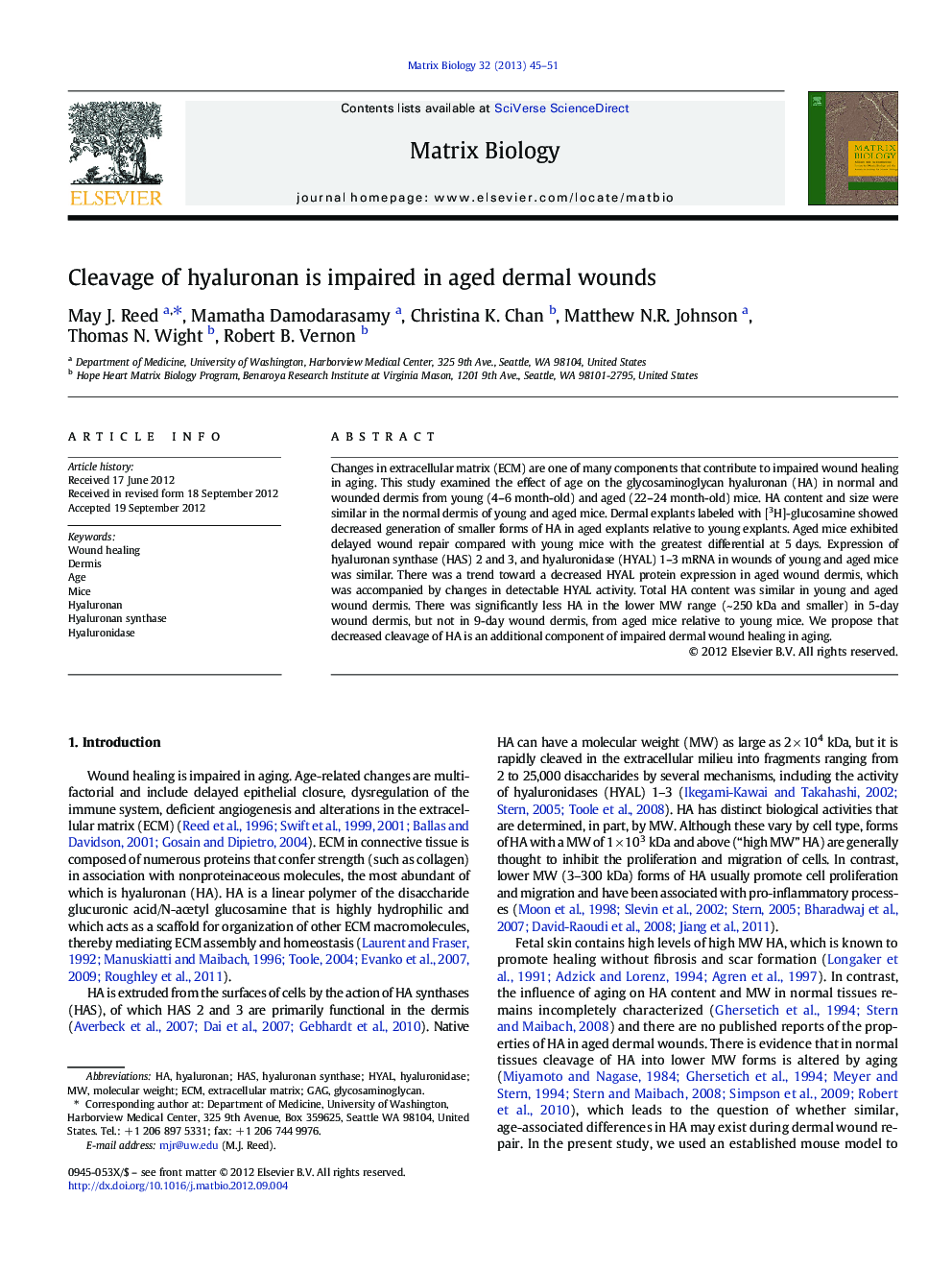| Article ID | Journal | Published Year | Pages | File Type |
|---|---|---|---|---|
| 2144820 | Matrix Biology | 2013 | 7 Pages |
Changes in extracellular matrix (ECM) are one of many components that contribute to impaired wound healing in aging. This study examined the effect of age on the glycosaminoglycan hyaluronan (HA) in normal and wounded dermis from young (4–6 month-old) and aged (22–24 month-old) mice. HA content and size were similar in the normal dermis of young and aged mice. Dermal explants labeled with [3H]-glucosamine showed decreased generation of smaller forms of HA in aged explants relative to young explants. Aged mice exhibited delayed wound repair compared with young mice with the greatest differential at 5 days. Expression of hyaluronan synthase (HAS) 2 and 3, and hyaluronidase (HYAL) 1–3 mRNA in wounds of young and aged mice was similar. There was a trend toward a decreased HYAL protein expression in aged wound dermis, which was accompanied by changes in detectable HYAL activity. Total HA content was similar in young and aged wound dermis. There was significantly less HA in the lower MW range (~ 250 kDa and smaller) in 5-day wound dermis, but not in 9-day wound dermis, from aged mice relative to young mice. We propose that decreased cleavage of HA is an additional component of impaired dermal wound healing in aging.
► HA content and size were similar in the normal dermis of young and aged mice. ► Labeled dermal explants showed decreased generation of smaller forms of HA in aged explants relative to young explants. ► Total HA content was similar in young and aged wound dermis. ► There was significantly less lower MW HA in 5-day wound dermis from aged mice relative to young mice.
